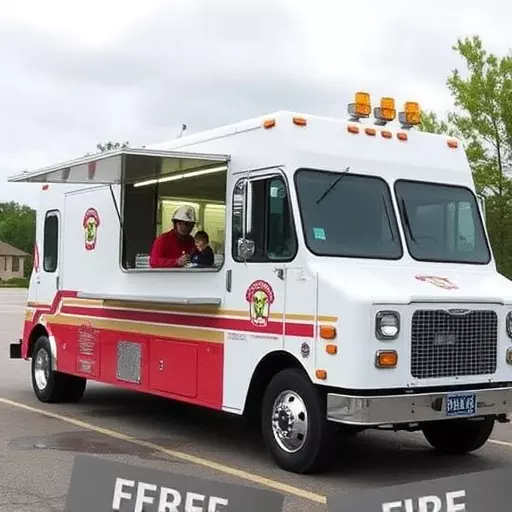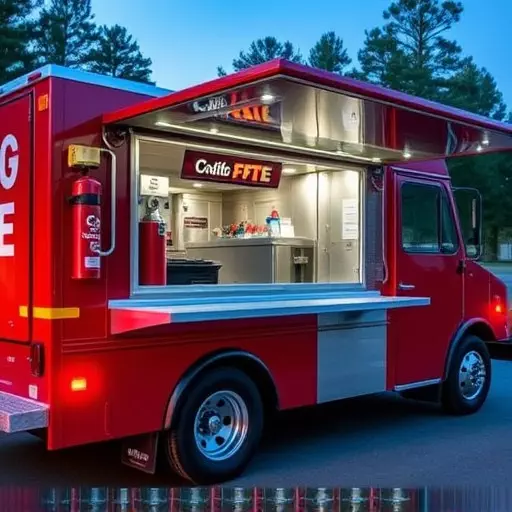The National Fire Protection Association (NFPA) standards guide fire safety in Spring Lake's food trucks, emphasizing efficient fire suppression systems for rapid containment, property preservation, and enhanced employee/customer safety. Installation goes beyond regulations, offering quicker response times, reduced damage, and improved business continuity, making it a strategic investment for competitive success. Spring Lake leads in implementing these systems, providing personalized guidelines based on each truck's layout, ensuring quick recovery, minimal downtime, and NFPA compliance, fostering a thriving food truck community.
In the dynamic world of mobile culinary experiences, food trucks face unique safety challenges. The NFPA (National Fire Protection Association) standards play a pivotal role in ensuring fire safety, particularly with specialized regulations for food truck fire suppression. This article delves into the intricacies of these standards, highlighting the crucial role of fire suppression systems in mitigating risks. We explore installation benefits and real-world implementations, focusing on Spring Lake’s effective strategies for food truck fire suppression system integration and maintenance.
- Understanding NFPA Standards for Food Truck Fire Safety
- The Role of Fire Suppression Systems in Food Trucks
- Installation and Benefits of Fire Suppression Systems in Food Trucks
- Spring Lake: Implementing and Maintaining Food Truck Fire Suppression Systems Effectively
Understanding NFPA Standards for Food Truck Fire Safety
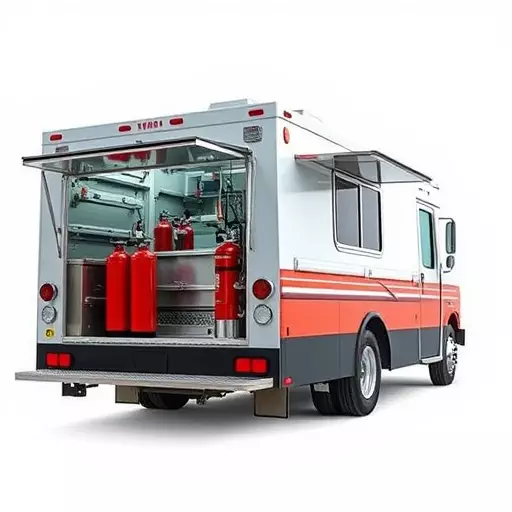
The National Fire Protection Association (NFPA) standards are a comprehensive guide for ensuring fire safety in various settings, including food trucks. For businesses operating food trucks in Spring Lake or any other location, understanding and adhering to these standards is not just a regulatory requirement but also a crucial step towards minimizing potential risks. NFPA provides specific guidelines tailored to mobile kitchens, focusing on fire prevention, detection, and suppression systems.
One of the key aspects covered is the installation of efficient food truck fire suppression systems. These systems are designed to quickly extinguish fires in their early stages, often before they can spread. The benefits of implementing such systems are significant, including reduced damage to property, minimized downtime for businesses, and most importantly, enhanced safety for employees and customers. By adhering to NFPA standards, food truck operators can ensure a safer cooking environment and better prepare themselves for any emergency situations.
The Role of Fire Suppression Systems in Food Trucks
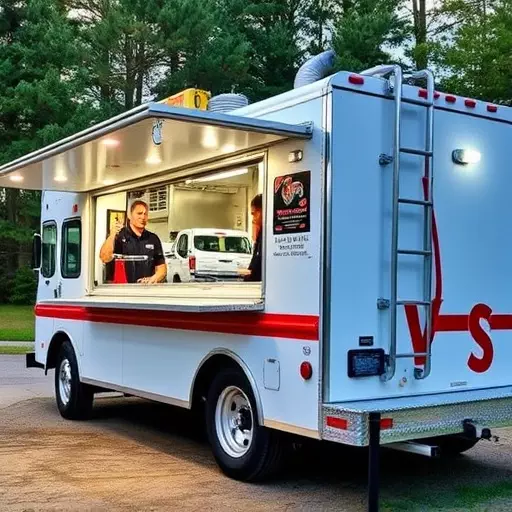
Fire suppression systems play a pivotal role in ensuring the safety of individuals and the preservation of assets within food trucks, especially given the risks associated with cooking activities on mobile platforms. These systems are designed to quickly detect and extinguish fires, minimizing damage and saving lives. In Spring Lake, the installation of efficient fire suppression systems is not just a regulatory requirement but also a strategic investment for food truck operators.
The benefits of implementing food truck fire suppression systems are manifold. They offer rapid response times, allowing for faster evacuation and reducing potential injuries. These systems can effectively suppress fires in their early stages, preventing them from spreading to other areas, and they significantly decrease the risk of structural damage to the vehicle. Moreover, fire suppression system installation enhances the overall safety profile of food trucks, boosting customer confidence and attracting more patrons, which is crucial for success in a competitive market.
Installation and Benefits of Fire Suppression Systems in Food Trucks
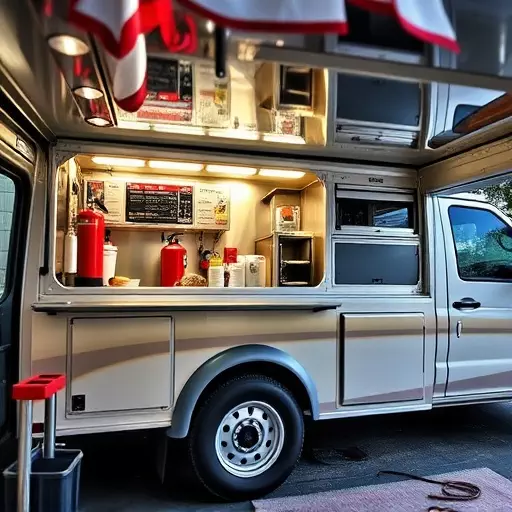
Installation and Benefits of Fire Suppression Systems in Food Trucks
The integration of fire suppression systems in Spring Lake’s food trucks is a critical step toward enhancing safety standards. These systems, designed to detect and extinguish fires swiftly, play a pivotal role in mitigating potential hazards within confined spaces like food trucks. The installation process involves strategic placement of sensors and nozzles, often tailored to the specific layout and cooking equipment of each vehicle. This ensures comprehensive coverage without hindering the efficient operation of the truck.
Beyond ensuring the safety of both occupants and the integrity of the food being prepared, fire suppression systems offer numerous advantages. They significantly reduce the risk of structural damage to the trucks, preserving their value and operability in case of a fire outbreak. Moreover, these systems can help minimize business interruptions, as quick response times prevent fires from escalating and allow for swift resumption of operations. By adhering to NFPA standards, Spring Lake’s food truck owners not only comply with regulations but also benefit from advanced protection against the destructive power of fires.
Spring Lake: Implementing and Maintaining Food Truck Fire Suppression Systems Effectively

Spring Lake has been at the forefront of implementing and maintaining effective Food Truck Fire Suppression Systems. This is driven by a deep understanding of the unique challenges faced by food truck operators, who must ensure safety while meeting business demands. The city offers comprehensive guidelines for installing these systems, ensuring they are tailored to each truck’s specific layout and usage patterns. This personalized approach maximizes the benefits of food truck fire suppression systems, such as quick response times, minimal damage, and rapid recovery, all vital for maintaining operations and customer satisfaction.
By prioritizing Fire Suppression Systems, Spring Lake not only upholds strict safety standards but also fosters a thriving food truck community. The benefits extend beyond compliance; they include enhanced operational efficiency and reduced downtime due to fires. This proactive stance positions the city as an example for others, demonstrating that effective fire suppression isn’t just a regulatory requirement but a key enabler of successful and sustainable food truck businesses.
